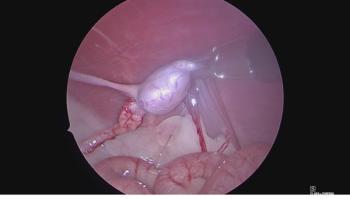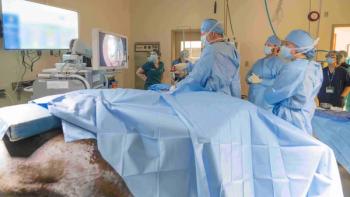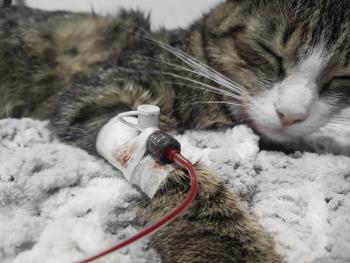
Symposium on key gastrointestinal surgeries
The articles in this symposium provide an overview of indications, techniques, and complications related to a variety of gastrointestinal surgical procedures.
Gastrointestinal (GI) surgeries are commonly performed in small-animal practices. Experienced veterinarians think that new graduates should have a high level of proficiency in these procedures, despite the fact that most veterinary students do not receive much live-animal training in these techniques.1 Fortunately, the ease of surgery and the outcome can be improved by understanding a few principles.2-7 The articles in this symposium provide an overview of indications, techniques, and complications related to a variety of GI surgical procedures.
Preoperative considerations
All animals should undergo presurgical diagnostic tests (complete blood count, platelet count, serum chemistry profile, coagulation tests, urinalysis) to determine what treatments should be administered before, during, and after the procedure. For example, animals with GI disease often present with vomiting that may lead to dehydration and electrolyte abnormalities. Preoperative potassium or magnesium deficiencies could result in ileus, arrhythmias, and other complications during or after surgery, so they are best corrected before anesthesia.2,3 Animals with severe liver disease or sepsis may have prolonged clotting times, requiring crossmatching and transfusion before surgery.5,6 Animals suspected of having neoplasia should undergo staging of their disease, including thoracic radiography and abdominal ultrasonography. Aspirates obtained during ultrasonography may provide a diagnosis in some patients, obviating the need for surgery.
If possible, fast patients for 12 hours before surgery. Preoperatively, rehydrate patients and administer analgesics. Give hypoalbuminemic patients colloidal fluids such as hetastarch or plasma to provide oncotic pressure support. Choose premedicants with care since some drugs (e.g. morphine) may cause vomiting.7 Clip patients undergoing gastric procedures to the midsternal level, and clip patients receiving feeding tubes farther laterally on the abdomen. To prevent intraoperative aspiration, all patients should have an appropriately sized endotracheal tube with an inflated cuff. Avoid nitrous oxide in patients with GI distention. During anesthesia, continuous-rate infusions of lidocaine or fentanyl can be administered to reduce gas anesthetic requirements.8,9 These infusions can be continued postoperatively to provide analgesia. Ideally, respiratory and cardiac function and oxygenation should be monitored during anesthesia with a capnograph, electrocardiograph, arterial blood pressure monitor, and pulse oximeter. Forced-air heating blankets (e.g. Bair Hugger—Arizant Healthcare) can be used to keep patients warm during the procedure.
Local contamination is expected in GI surgeries; using prophylactic antibiotics can reduce infection rates. In patients whose stomachs contain food or foreign material, administer a broad-spectrum antimicrobial such as cefazolin (for surgery of the upper GI tract) or cefoxitin (for surgery of the lower GI tract) intravenously at induction and again in two to six hours.3 Before incising the GI tract, set aside clean sterile instruments on a designated portion of the instrument table. Be prepared to take biopsy and culture samples during the procedure, and consider placing feeding tubes in some patients. Cautery should be available intraoperatively for patients with coagulopathies.
Operative and postoperative considerations
Count the sponges and laparotomy pads before the abdomen is opened and again before it is closed to prevent iatrogenic peritoneal foreign bodies. During the procedure, isolate the GI tract with moistened laparotomy pads to contain any spillage and reduce tissue desiccation. Once you've entered and repaired the GI tract, change gloves and instruments to reduce contamination.2,3 If severe contamination occurs, lavage the abdomen with 2 to 10 L warm sterile saline solution after closing the GI tract, and continue giving antibiotics for five or more days after surgery. Suction all fluid from the abdominal cavity before closure.
Postoperative treatments, complications, and prognosis vary depending on the underlying disease process and the patient's condition. Most animals continue to receive fluid support and analgesics after GI surgery, and some may require antiemetics, prokinetic agents, or other medications.2-6 In patients that are not vomiting, small amounts of food and water can be offered within 16 hours of the procedure.2-4
—Dr. Karen M. Tobias
REFERENCES
1. Johnson AL, Greenfield CL, Klippert L, et al. Frequency of procedure and proficiency expected of new veterinary school graduates with regard to small animal surgical procedures in private practice. J Am Vet Med Assoc 1993;202:1068-1071.
2. Rasmusen L. Stomach. In: Slatter D, ed. Textbook of small animal surgery. 3rd ed. Philadelphia, Pa: WB Saunders Co, 2003;610-614.
3. Fossum TW. Surgery of the digestive system. In: Small animal surgery. 2nd ed. St. Louis, Mo: Mosby, 2002;346-350.
4. Brown DC. Small intestines. In: Slatter D, ed. Textbook of small animal surgery. 3rd ed. Philadelphia, Pa: WB Saunders Co, 2003;644-664.
5. Martin RA, Lanz OI, Tobias KM. Liver and biliary system. In: Slatter D, ed. Textbook of small animal surgery. 3rd ed. Philadelphia, Pa: WB Saunders Co, 2003;713-717.
6. Fossum TW. Surgery of the liver. In: Small animal surgery. 2nd ed. St. Louis, Mo: Mosby, 2002;450-457.
7. Hall EJ, Simpson KW. Diseases of the small intestines. In: Ettinger SJ, Feldman EC, eds. Textbook of veterinary internal medicine. 5th ed. Philadelphia Pa: WB Saunders, 2000;1294-1298.
8. Valverde A, Doherty TJ, Hernandez J, et al. Effect of lidocaine on the minimum alveolar concentration of isoflurane in dogs. Vet Anaesth Analg 2004;31:264-271.
9. Hellyer PW, Mama KR, Shafford HL, et al. Effects of diazepam and flumazenil on minimum alveolar concentrations for dogs anesthetized with isoflurane or a combination of isoflurane and fentanyl. Am J Vet Res 2001;62:555-560.
Newsletter
From exam room tips to practice management insights, get trusted veterinary news delivered straight to your inbox—subscribe to dvm360.




